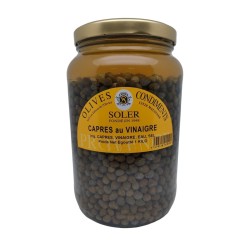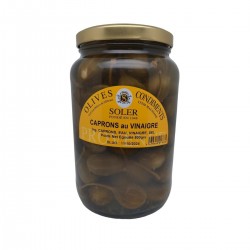
Capers vs. caper berries : the Distinction
Capers and Caperberries : Differences and Uses
Origin and Cultivation:
Capers and caperberries both come from the caper bush, a Mediterranean shrub.
Capers are the unopened flower buds of the caper bush, often harvested before full maturity.
Caperberries, on the other hand, are the larger, mature fruits of the caper bush.
Appearance and Size:
Capers are small berries, typically the size of a small pea, and are harvested before they blossom.
Caperberries are larger fruits, reaching the size of a small olive, and are harvested when fully mature.
Flavor and Texture:
Capers have an intense, slightly salty, and tangy flavor, making them a popular condiment in many cuisines.
Caperberries have a sweeter flavor and a fleshier texture compared to capers, with a slightly bitter note.
Culinary Uses:
Capers are often used as a condiment in salads, sauces, pasta dishes, and fish dishes.
Caperberries are also used in cooking, but due to their larger size, they are sometimes stuffed or added to dishes where a fleshier texture is desired.
Storage and Preparation:
Capers are typically sold in jars, pickled in vinegar or salt, and can be used as is.
Caperberries are often preserved in vinegar or oil and may require additional preparation before use, such as rinsing to remove excess salt or vinegar.



